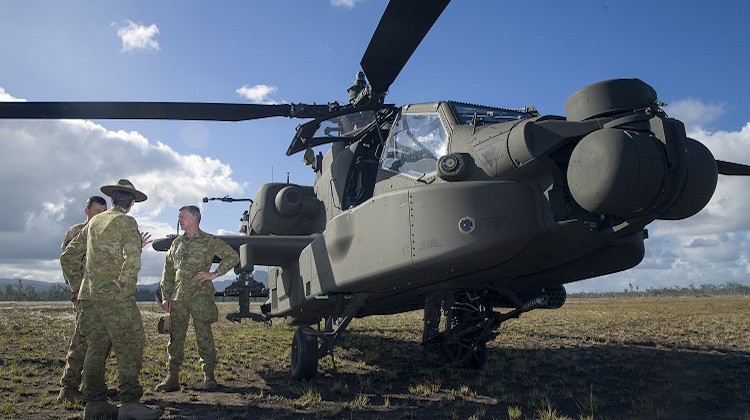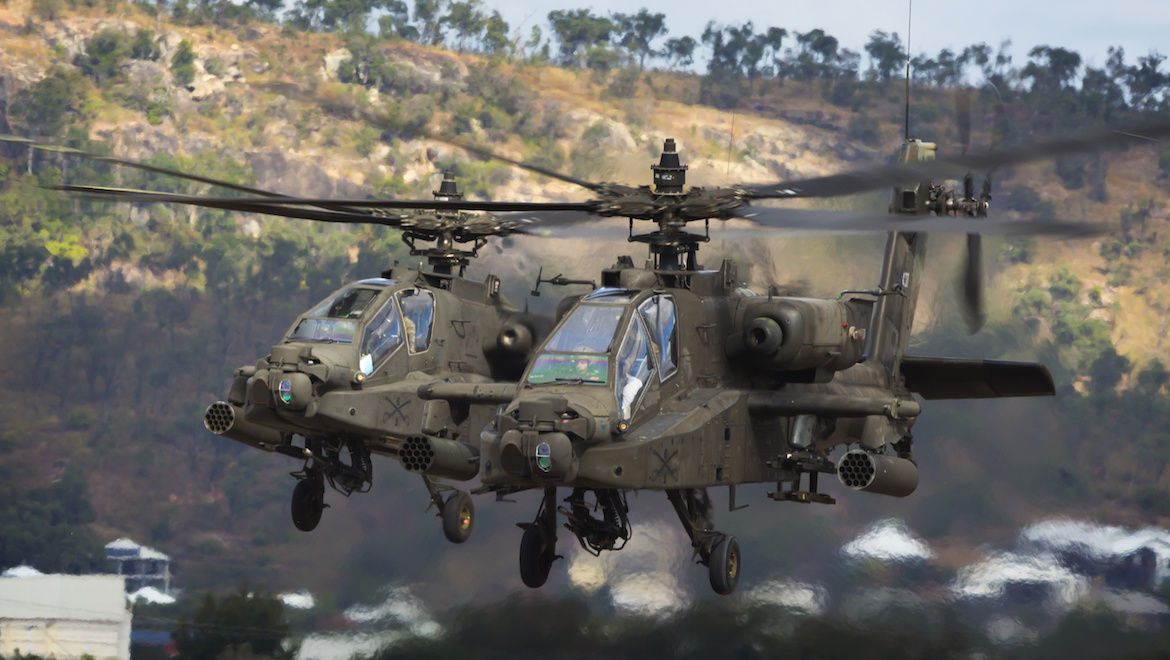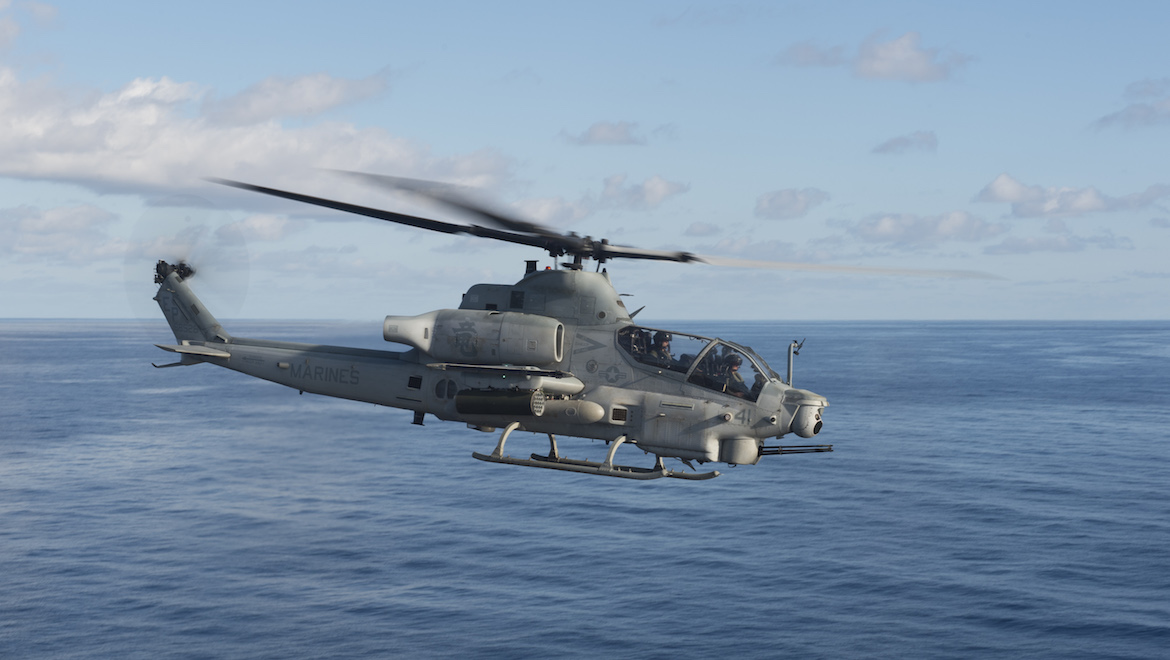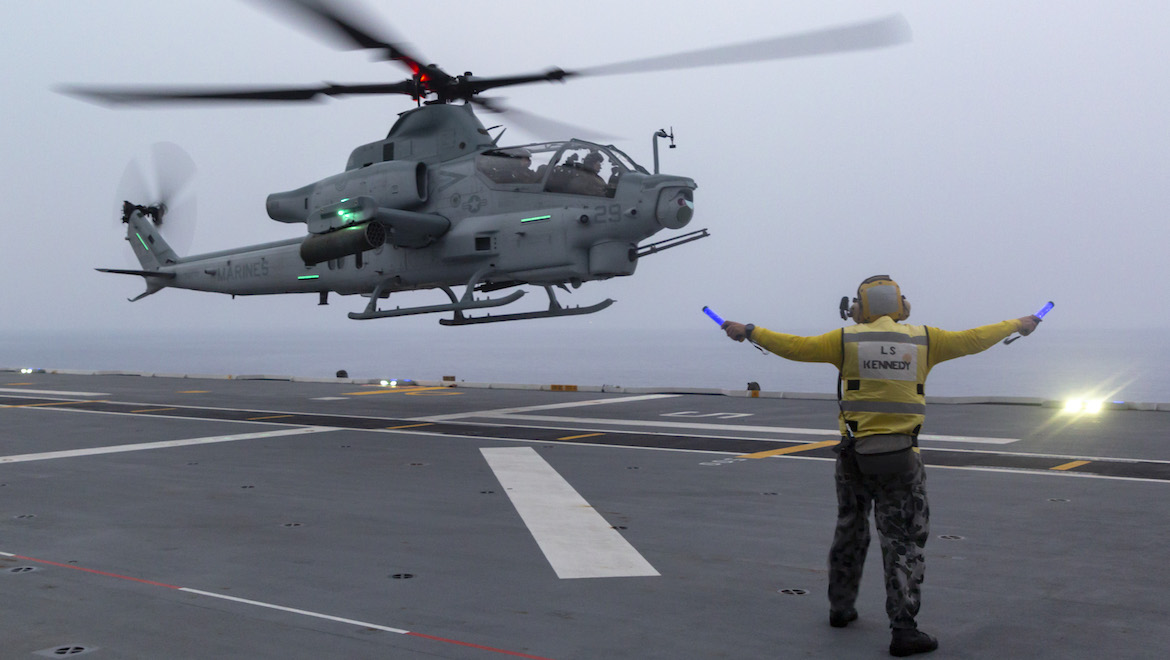
Boeing has put forward its AH-64E Apache in response to the Australian government’s Project LAND 4503 armed reconnaissance helicopter (ARH) replacement request for information (RFI).
Meanwhile, Bell has talked up up its AH-1Z “Viper” helicopter as a potential replacement for the Australian Army’s Tiger ARH. However, the company stopped short of confirming it had made a submission.
Boeing said it a statement on August 30 2019 it had put forward its AH-64E Guardian Apache attack helicopter to replace the Australian Army’s fleet of 22 Airbus Helicopters Tiger ARH.
“Australia would not only benefit from the AH-64’s mission capabilities, it would also enjoy its technological and strategic advantages against adversary aircraft; a global parts and supply network and a domestic training, support and sustainment team,” Boeing said.
The AH-64E is the latest version of the AH-64D Longbow Apache, and features an enhanced combat system and the ability to be integrated with unmanned systems.
The United States, United Kingdom, India, Indonesia, Taiwan, among others, have committed to buying the AH-64E. The aircraft offered the ability to integrate with US and other regional forces in combined operations.
“Boeing’s AH-64E Apache is known for its survivability, sustainability, interoperability and reconnaissance capability,” Terry Jamison from Boeing Global Sales and Marketing, Defense, Space and Security said
“As an Apache operator, Australia would join coalition countries, including the US and UK, and regional partners Singapore, Indonesia, Japan and the Republic of Korea.”
Boeing Defence Australia vice president and managing director Darren Edwards added: “The benefits of Apache for Australia are more significant than continued platform upgrades. Boeing plans to deliver support services in-country and engage local suppliers to maximise Australian industry involvement for the ARH replacement program.”
The US Army has a planned ongoing upgrade program which will see the AH-64E serve into the 2040s, and Boeing said Australia could stay in lockstep with that program to ensure it had the latest capabilities as they were rolled out across a larger fleet.
Project LAND 4503 sought a total of 29 airframes to replace the 22 Tigers. It specified that 24 aircraft would be operational at a single location and five airframes will be assigned to training.
Designed to “deliver armed reconnaissance efforts in close and deep contested battlespace”, the RFI called for an initial operational capability (IOC) of one squadron of 12 aircraft in 2026, and a fully operational capability (FOC) to follow in 2028.
It states that at IOC Army would be able to operationally deploy a troop of four aircraft. At FOC, Army would be capable of generating 12 aircraft for deployment while maintaining a training system of five aircraft.

Bell highlights proven AH-1Z Viper suitability for Project LAND 4503
Meanwhile, Bell has extolled the virtues of its AH-1Z “Viper” helicopter as a potential replacement for the Australian Army’s Tiger ARH.
Although the company did not directly confirm it had responded to the LAND 4503 armed reconnaissance helicopter replacement RFI which closed on August 30, the company issued a statement listing the capability and performance attributes of the AH-1Z, which neatly align with those of the RFI.
“The combat proven Bell AH-1Z Viper is the only marinised attack helicopter in the world that is specifically designed and built for expeditionary and maritime operations,” the Bell statement said.
“Marinisation is more than just corrosion protection against saltwater. Unlike unproven and costly add-ons, Bell’s marinisation begins at aircraft design and is built into the aircraft at point of manufacture to insure conformity to shipboard operations.”

The company said the marinisation process also included the AH-1Z’s composite rotor blades and yoke style main rotor hubs which significantly outperformed legacy “strap-pack” type systems that were prone to corrosion and failure.
The AH-1Z, “also includes semi-automatic blade folding for quick stowage either on board ship or for rapid C-17 deployment, rotor brakes, ease of maintenance, electromagnetic environmental effects (E3) hardening which provides safety against the ship’s powerful radars and other sensors from interfering with aircraft onboard weapons and systems”.
The company also noted the Viper’s commonality with those helicopters operated by the US Marine Corps, some of which were based in Australia on regular rotations to the Northern Territory, as well as being permanently deployed to the wider region.
Bell’s statement effectively confirmed the LAND 4503 project would be a race between three contenders – the AH-1Z, Boeing’s AH-64E Guardian Apache, and a significantly upgraded Tiger ARH offered by Airbus Helicopters.













